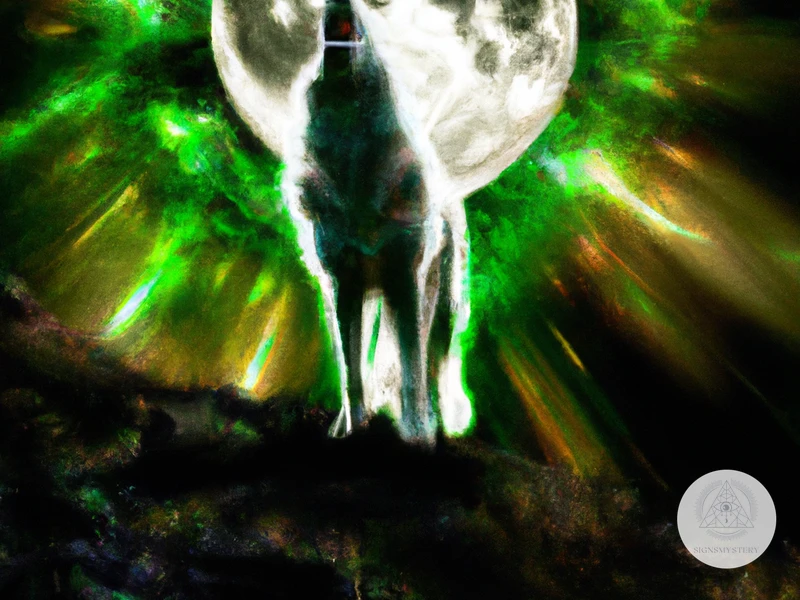Shamanism, an ancient spiritual practice that spans across cultures, has long been associated with the use of animal spirits and their sacred properties. One aspect of this practice that has gained attention is the use of animal pelts in shamanic healing. Each pelt is believed to possess unique healing properties that can aid the individual in various ways. In this article, we will explore the history of shamanism, the role of animal spirits, the healing properties of different animal pelts, and how they are used in shamanic healing today. Join us on this journey to discover the fascinating and mystical connections between animals and humans.
The Role of Animal Spirits in Shamanism

In shamanic practice, animal spirits play a crucial role. Animals are viewed as teachers, guides, and protectors in many indigenous cultures. In shamanism, animals are believed to possess certain qualities or powers that can be passed on to humans through the use of their pelts. Each pelt has its own unique characteristics and is associated with different healing properties. For example, bear pelts are used for strength and protection, while deer pelts are used for gentleness and grace. The use of animal pelts in shamanic healing practices is steeped in tradition and symbolizes a connection to the natural world. However, it is important to consider the ethical implications of using animal pelts in shamanic practice and to ensure that the pelts are obtained through sustainable and humane methods.
History of Shamanism
Shamanism has been practiced for thousands of years in various cultures around the world. The word “shaman” originates from the Tungus people of Siberia and refers to a spiritual leader who can communicate with the spirit world. Shamanism was commonly practiced in many ancient societies, including those of the Native Americans, Australian Aborigines, and the indigenous peoples of Siberia and Central Asia.
Shamanism involves a variety of practices, including divination, healing, and rituals. The shaman acts as a mediator between the physical and spiritual realms and uses various tools and techniques to achieve altered states of consciousness. These tools and techniques include drumming, chanting, dance, and the use of animal spirits and pelts.
The earliest evidence of shamanic practices dates back to the Paleolithic period, some 30,000 years ago. Cave paintings and other artifacts suggest that shamans played an important role in the lives of ancient peoples. They were respected for their wisdom and ability to connect with the spiritual world to solve problems and heal illnesses.
Shamanism has evolved over time and has been influenced by cultural and religious changes. Today, it is still practiced in traditional societies and has also gained popularity among people in Western cultures seeking spiritual growth and healing. However, the use of animal pelts and other tools in shamanic practice has raised ethical concerns and sparked debates about their conservation and care.
The Importance of Animal Spirits in Shamanic Practice
Shamanic practitioners believe that animal spirits are an essential component of their healing practice. These spirits are seen as teachers, guides, and protectors who offer wisdom, strength, and power to those who seek their guidance.
Animal spirits are believed to offer the following benefits:
| Benefit | Description |
| Connection to Nature | Animal spirits represent the natural world and help practitioners connect with the earth and all its inhabitants. |
| Protection | Animal spirits offer protection to practitioners during journeys or ceremonies, helping to keep negative energies at bay. |
| Guidance | Animal spirits are seen as wise teachers who can guide practitioners through difficult situations or help them gain insight into their own lives and challenges. |
| Healing | Animal spirits offer healing energy to practitioners, both physically and emotionally. This energy can rejuvenate the body, mind, and spirit. |
In shamanic practice, animal spirits are often called upon during rituals and ceremonies. The practitioner may use a variety of tools, including drums, rattles, and smoked herbs, to attune themselves to the spirit world and invite animal helpers into their journey.
It’s important to note that while animal pelts play a significant role in shamanic healing practices, many practitioners are mindful of ethical and conservation issues surrounding their use. Some choose to work only with ethically sourced pelts or use synthetic materials in their practice. For more information on this topic, please see our article on the ethics of fur pelts in shamanic practice.
The Healing Properties of Animal Pelts
Animal pelts have been used in shamanic healing practices for centuries due to their believed healing properties. Each animal pelt is believed to possess a specific energy and power that can be harnessed through shamanic practices. For example, a bear pelt is associated with strength and endurance, while a deer pelt is associated with gentleness and grace. Wolf pelts, on the other hand, are believed to have the power to help individuals connect with their wild and instinctual nature. It’s important to note that the use of animal pelts in shamanic practices also holds significant cultural and spiritual symbolism, and requires careful consideration and respect. To learn more about the symbolism behind animal fur in shamanism, check out this article.
Bear Pelt
Bear pelts are highly regarded in shamanic healing practices due to the powerful healing and protective properties they possess. In many shamanic traditions, the bear is considered a wise and formidable creature, and its pelt is believed to carry those characteristics.
Bear pelts are often used to promote grounding and stability. They are also believed to offer protection from negative energies and help create a safe space for healing. In some shamanic cultures, it is seen as necessary to have a bear pelt during healing and ceremonial practices for its strength-enhancing qualities.
Bear pelts are believed to be helpful in balancing emotions and promoting calmness. The warmth and softness of the pelt can create a soothing and nurturing environment, aiding in relaxation and the release of tension.
It is important to note that the use of bear pelts in shamanic practices raises concerns regarding conservation and ethics. In some areas, bears are endangered, and using their pelts could contribute to further endangerment. It is important for shamanic practitioners to carefully consider the source of their bear pelts and prioritize ethical and sustainable practices.
Want to learn more about the history and care of fur pelts in shamanic traditions? Check out our article on history and fur pelts in shamanic traditions.
Wolf Pelt
Wolf pelts have been used for years for their protective and healing properties. Shamans recognize the wolf as the symbol of endurance, loyalty, and freedom, and its qualities are believed to heal both physical and emotional wounds.
The healing properties of using a wolf pelt:
- Provides courage and strength to confront fears and challenges.
- Offers protection from negative energy and harm.
- Releases and heals past traumas and fears.
- Allows the person to connect with their inner self and intuition.
- Encourages exploration and adventure.
In shamanic healing, the wolf pelt is commonly used for mental and emotional healing by laying over a person during a healing session. Native American traditions also utilize the wolf and coyote pelts for their traditional attire in ceremonies.
However, it is essential to consider the conservation role of shamanism and to ensure that the use of wolf pelts is sourced sustainably and ethically to avoid contributing to endangering species. Proper fur and pelt care is also crucial to maintain the longevity of the pelt and prevent damage. Knowing how to clean, store and protect the wolf pelt is a prerequisite for its longevity and optimal use. Fur and pelt care for shamanic use is an essential aspect that every shaman using animal pelts for spiritual and healing practices should understand and practice.
Wolf pelts are powerful tools in shamanic healing practices. They offer insightful and transformative lessons and can provide the protection and the courage needed to face challenges and overcome fears. However, it is critical to source and use them sustainably and ethically to avoid harming endangered species, and always to mind proper care to ensure their long-lasting use.
Deer Pelt
Deer pelt is one of the most commonly used animal skins in shamanic healing practices. Shamans often use it to enhance gentleness, compassion, and a sense of peace. Deer pelt is believed to have an intrinsic connection to feminine energy, and it is believed to have the ability to impart healing power and bring forth new beginnings.
Deer pelt is associated with the energy of the heart chakra. It is believed that by using deer pelt in shamanic healing, one can allow for the healing energy of the heart chakra to flow freely. It is thought to be especially effective in cases where there is a need to release emotional blockages or trauma.
In addition to its healing properties, deer pelt is often used in shamanic attire. It is a popular choice for those who wish to create a sense of connection to nature and the gentleness of the deer. Deer pelt is also often used in shamanic drum making due to its flexibility and durability.
To use deer pelt in shamanic healing, there are several techniques that can be employed. Some shamans will use deer pelt in a pelt laying technique, where the pelt is placed over the client’s body to impart its healing properties. Others will use deer pelt in a pelt-wrapping technique, where the pelt is wrapped around the client’s body like a blanket to provide comfort and support during the healing process.
It is important to note that while deer pelt is a common material used in shamanic healing and attire, it is important to use it responsibly and with respect for the animal. Deer populations must be respected and conserved for future generations, and it is up to shamans to ensure that these animals are treated with the utmost care and reverence.
There are several resources available that provide guidance on responsible and ethical sourcing of animal pelts for use in shamanic practices. It is important to educate oneself on the conservation role of shamanism and the impact of using endangered species in shamanic practices before incorporating animal pelts into one’s practice.
Buffalo Pelt
Buffalo pelt has been used in shamanic healing practices for centuries. Shamanic healers believe that the spirit of the buffalo is strong and powerful, and using its pelt can provide a connection to that spirit.
Buffalo pelt is seen as a symbol of abundance and generosity, as the buffalo provides so many resources for indigenous communities. The hide is often used in ceremonies to honor the animal and give thanks for its sacrifice.
In terms of healing properties, buffalo pelt is believed to be grounding and protective. It is often used to create a sense of safety and security for those undergoing healing, as well as for protection against negative energy.
Buffalo pelt is also often used for physical healing, as it is believed to have anti-inflammatory properties. It can be used to alleviate pain and reduce swelling in the body.
Buffalo pelt is an important tool in shamanic healing practices. However, it’s important to use it responsibly and sustainably, as buffalo populations have been greatly impacted by human activities. It’s important for shamanic practitioners to consider the conservation role of shamanism in relation to endangered species and to make sure they source their buffalo pelts ethically.
Here are some possible ways of using buffalo pelt in shamanic healing:
| Pelt Type | Healing Method |
|---|---|
| Buffalo Pelt | Use in pelt laying ceremonies to promote grounding and protection. |
| Buffalo Pelt | Create a pelt-wrapped bundle to provide physical and emotional healing properties. |
| Buffalo Pelt | Use in conjunction with a drum made with real buffalo hide for a powerful healing experience. |
If you’re interested in shamanic practices that involve animal pelts, you may also want to check out the following resources:
- Using Fur Pelts in Shamanic Attire: Pros and Cons
- The Conservation Role of Shamanism in Relation to Endangered Species
- Shamanic Drum Making with Real Animal Hide: Pros and Cons
Rabbit Pelt
Rabbit pelts have been used for centuries in shamanic healing due to their unique properties. These soft and delicate pelts are ideal for promoting calmness and soothing anxieties.
Here are some of the specific healing properties of rabbit pelts:
| Property | Description |
|---|---|
| Softness | The softness of rabbit pelts provides a calming effect that helps individuals relax during shamanic practices. |
| Gentleness | Rabbit pelts are gentle to the touch, which makes them ideal for soothing anxieties and promoting inner peace. |
| Warmth | Rabbit pelts are warm to the touch, providing comfort and a feeling of security during shamanic healing practices. |
| Comfort | The comfort provided by rabbit pelts makes them a popular choice for shamanic practitioners seeking to create a nurturing environment for their clients. |
In shamanic healing practices, rabbit pelts can be used in a number of ways. These can include:
- Pelt Laying: Placing rabbit pelts on the ground to create a soft and soothing surface for individuals to lie on during shamanic healing sessions.
- Pelt-Wrapping: Wrapping individuals in rabbit pelts to provide physical warmth and emotional comfort during spiritual journeying.
- Pelt-Covered Objects: Covering objects used during shamanic practices with rabbit pelts to imbue them with the soothing properties of the material.
Rabbit pelts are an important tool for shamanic healers seeking to promote calmness, comfort, and inner peace during their practices. With their soft and gentle properties, rabbit pelts are an ideal choice for
Subscribe to Our Newsletter
Sign up to receive the latest news and updates.
How Animal Pelts are Used in Healing
Animal pelts have been used in shamanism for their healing properties. There are several ways that animal pelts are used in healing, each with its unique benefits. Pelt laying involves placing a pelt directly on the client or patient, allowing for the transfer of energy and the absorption of negative energy by the pelt. Pelt-wrapping involves wrapping the client or patient in a pelt, allowing for a cocoon-like effect and deep relaxation. Pelt-covered objects can also be used for healing, such as using a bear pelt as a drum for sound healing. Regardless of the method, each animal pelt has unique healing properties. A bear pelt represents strength and courage, while a wolf pelt represents loyalty and protection. Deer pelts are associated with gentleness and intuition, buffalo pelts with abundance and grounding, and rabbit pelts with playfulness and fertility. By using animal pelts in healing, shamanic practitioners can tap into the energy and power of these animal spirits for transformative and restorative healing.
Pelt Laying
Pelt laying is one of the most common ways of using animal pelts in shamanic healing. This method involves placing the animal pelt directly on the affected area of the patient’s body. Here are some of the ways different animal pelts are used in pelt laying:
| Animal Pelt | Healing Properties | Commonly Treated Conditions |
|---|---|---|
| Bear Pelt | Strength, courage, protection | Anxiety, depression, physical weakness |
| Wolf Pelt | Intuition, guardianship, loyalty | Insomnia, emotional instability, spiritual imbalance |
| Deer Pelt | Gentleness, vulnerability, grace | Recovering from trauma, spiritual renewal, heart conditions |
| Buffalo Pelt | Abundance, manifestation, grounding | Spiritual disconnection, poverty mentality, physical weakness |
| Rabbit Pelt | Speed, agility, playfulness | Mental lethargy, low energy, lack of motivation |
Before laying the pelt on the affected area, the shaman may perform a series of rituals such as smudging, chanting, or drumming. The pelt is then laid on the patient’s body with the fur side facing down. The patient may be asked to lie down in a comfortable position and relax while the shaman performs the healing.
The length of time the pelt remains on the affected area varies and may depend on the severity of the condition. In most cases, the shaman determines when to remove the pelt based on their intuition. Once the pelt is removed, the shaman may perform additional rituals or provide further guidance to the patient.
Pelt laying is a gentle yet powerful healing practice that can support physical, emotional, and spiritual wellness. It is believed that the animal spirits imbue the pelt with their healing energy, making this method one of the most effective ways of using animal pelts in shamanic healing.
Pelt-Wrapping
Pelt-Wrapping: In this method, the shaman wraps a person or an object with the animal pelt. This is believed to transfer the animal spirit’s energy and essence to the person or object being wrapped. The following table illustrates some of the animal pelts used in this method and their specific healing properties:
| Animal Pelt | Healing Properties |
| ———– | —————— |
| Bear | Strength, Courage, Protection|
| Wolf | Loyalty, Intuition, Teamwork|
| Deer | Gentleness, Love, Kindness|
| Buffalo | Abundance, Gratitude, Respect|
| Rabbit | Sensitivity, Fertility, Alertness|
The shaman may also use a combination of pelts to achieve a specific healing purpose. For example, wrapping a person in both bear and deer pelts may promote both strength and gentleness.
During the pelt-wrapping ritual, the shaman may also chant, sing, or drum to call upon the animal spirit and help it connect with the person being wrapped. This process is believed to help the person receive the full benefits of the animal spirit’s healing energy.
It is important to note that this method should only be performed by a trained shaman. Wrapping oneself or others in animal pelts without proper knowledge or respect for the practice can be disrespectful and may not lead to the desired healing effects.
Pelt-wrapping is a powerful shamanic technique for transferring animal spirit energy and achieving specific healing purposes. When performed with respect and understanding, it can be a transformative experience.
Pelt-Covered Objects
Pelt-covered objects are another way that animal pelts are used in shamanic healing practices. By covering objects such as drums, rattles, staffs, and even clothing with animal pelts, shamanic healers believe they can imbue these items with the healing powers of the animal spirit.
Different animal pelts are believed to have different healing properties, which is why different pelts are used to cover different objects. For example, the bear pelt is believed to bring strength and courage, while the wolf pelt is believed to bring protection and guidance.
The deer pelt is often used to cover a rattle, as the deer is seen as a spiritual messenger and rattle is used to call on spirit guides. The buffalo pelt, on the other hand, is believed to bring abundance and is often used to cover a drum that is used for healing ceremonies.
When creating pelt-covered objects, shamanic healers often use traditional techniques that have been passed down through generations. For example, the hide may be stretched and dried before being cut to the appropriate size and shape and then attached to the object using natural sinew or other materials.
In some cases, the pelt may also be adorned with other natural materials such as feathers, beads, or stones, to further enhance its healing properties. The finished object is then believed to be a powerful tool for shamanic healing practices.
Pelt-covered objects are a key aspect of shamanic healing practices and are believed to help connect healers and patients with the healing powers of animal spirits.
Conclusion
In conclusion, animal pelts have been used for centuries in shamanic healing practices. Different animal pelts are believed to hold unique healing properties that can aid in physical, emotional and spiritual healing. The use of animal pelts in shamanic practice is deeply rooted in ancient traditions and has been passed down through generations.
Shamanism is a practice that connects us to the natural world and the spiritual realms, and animal spirits play a key role in this connection. The use of animal pelts in shamanic healing practices is a way of harnessing the power of these animal spirits and incorporating their energies into our own healing processes.
Each animal pelt is believed to hold unique healing properties that can aid in specific areas of healing. For example, the bear pelt is believed to aid in strength and protection, while the deer pelt is associated with gentleness and sensitivity.
There are various ways in which animal pelts can be used in shamanic healing practices, including pelt laying, pelt-wrapping and pelt-covered objects. The use of these different techniques allows for a more personalized and focused approach to healing.
Overall, the healing properties of different animal pelts in shamanic healing practices are a fascinating aspect of ancient traditions. While the use of animal pelts may not be for everyone, for those who practice shamanism, it is a vital part of their healing journey. By harnessing the unique energies of different animal spirits, individuals can find holistic and meaningful paths to healing that go beyond the physical realm.
Frequently Asked Questions
1. Can any animal pelt be used in shamanic healing practices?
No, only certain animals have healing properties that are beneficial for shamanic practice.
2. Are there any cultural considerations when using animal pelts in shamanic healing?
Yes, it is important to be respectful of the cultural traditions and beliefs of the indigenous peoples who have used these practices for centuries.
3. Can animal pelts be used in conjunction with other healing modalities?
Yes, shamanic healing practices can be combined with other traditional and modern healing modalities to create a holistic approach to healing.
4. Should animal pelts be ethically sourced for shamanic healing practices?
Yes, it is important to only use animal pelts that have been ethically sourced to ensure the respect and preservation of animal life.
5. Are there any dangers associated with using animal pelts in shamanic healing?
There is a risk of cultural appropriation and misuse of sacred indigenous practices, so it is important to approach shamanic healing with intention and respect.
6. Can animal pelts be used for physical healing purposes?
Animal pelts have been known to have physical healing properties, but it is important to consult with a trained shaman or healthcare professional before using them for physical healing purposes.
7. Is shamanic healing with animal pelts recognized by modern medical practices?
Shamanic healing practices are not recognized by modern medicine, but they have been used for centuries by indigenous peoples for spiritual and emotional healing.
8. Can animal pelts be used in shamanic healing practices without a trained practitioner?
It is not recommended to attempt shamanic healing practices without proper training and guidance from a trained shamanic practitioner.
9. Can animal pelts be used in shamanic healing practices remotely?
Shamanic healing practices can be done remotely, but it is important to have proper training and guidance from a trained shamanic practitioner.
10. Are animal pelts the only tools used in shamanic healing practices?
No, animal pelts are just one of many tools used in shamanic healing practices. Other tools may include drums, rattles, feathers, and crystals.










